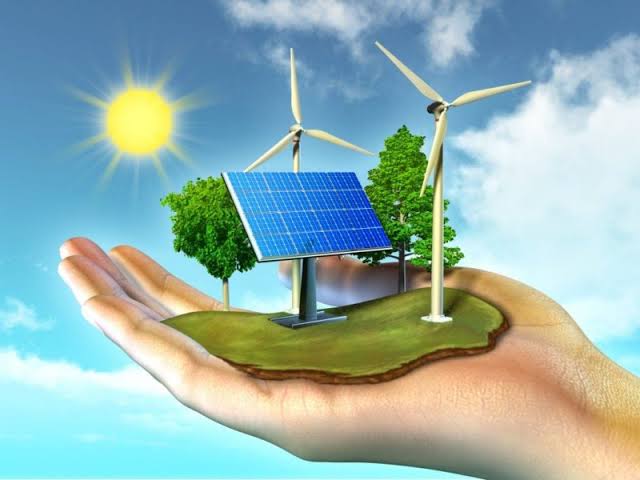The renewable energy revolution

Green fuels are leading the charge to achieve net-zero emissions by 2050
Global energy related carbon dioxide emissions rose by 6 per cent in 2021 to 36.3 billion tonnes, with the United States predicted to see a 1.3 per cent energy related increase in 2022.
Given a “business as usual” scenario, global carbon dioxide emissions could increase to approximately 43.08 billion metric tons in 2050.
In 2015, 196 nations met in Paris and agreed to make sustainable changes to decrease carbon emissions by the year 2050 and keep global warming below 1.5C. To satisfy this ‘Paris Agreement’, global emissions must be reduced by 45 per cent by 2030 and the world will reach net zero by 2050.
Founded in 2014, InterContinental Energy (ICE) is a dedicated green fuels developer and owner, leading the charge to sustainably reduce greenhouse gas emissions by transforming wind and solar renewable energy into green fuels.
“ICE is committed to driving the renewable energy revolution beyond green electricity into green fuels. Using only wind, sun, and water, our portfolio will produce clean fuels at a scale that is cost competitive with fossil fuels, significantly reducing global greenhouse gas emissions.”
Green fuels
The Earth’s surface is 71 per cent clean hydrogen in the form of water. ICE uses renewable energy to extract green hydrogen from seawater, which can then be used in heavy industry or transportation locally or further converted into green ammonia or other derivative products, which are easier to ship.
The role of hydrogen in sustainability and carbon neutrality is monumental, with the total market size expected to reach $2.5 trillion by 2050.
Shipping and heavy transport are two difficult to abate and highly pollutive sectors requiring decarbonisation options such as clean hydrogen or ammonia.
Aviation is another sector switching from jet fuel to synfuel, having set ambitious targets including carbon-neutral growth from 2020 onward and halving emissions between 2005 and 2050.
Aviation synfuels are the combination of green (produced by renewable energy) hydrogen and CO2 extracted from the atmosphere or nearby industry, which are liquid at ambient temperatures. They can power airplane internal combustion engines, reducing the amount of net greenhouse gases released into the atmosphere.
Economic Advancement
ICE seeks to harness the potential of coastal deserts with mega scale clean energy projects that create an opportunity to sustainably benefit surrounding communities both economically and environmentally.
Their unique sites offer brilliant sunshine during the day and strong wind at night, providing the lowest cost clean energy and very high utilization rates to optimise the conversion of green electrons into green hydrogen.
Each project will generate additional sources of revenue for the host country and create thousands of jobs directly and indirectly. It will also expand the supply chain industries and act as a magnet for companies seeking inexpensive green energy, providing permanent employment opportunities.
The projects will include desalination of seawater and electrolysis splitting the water into oxygen and hydrogen. The further production of green ammonia will also create excess potable water. These byproducts of fresh water and oxygen can be used to green the deserts, supporting food security, local industry, and recreation opportunities.
The company seeks to avoid development of any areas which would be adversely affected by construction or operations with attention to biodiversity, health of flora and fauna, heritage sites, and areas of cultural or environmental significance as well as clean design and emissions free planning.
Renewable Fuels Projects
InterContinental Energy has multiple large-scale renewable fuels projects in development, including the Asian Renewable Energy Hub (AREH) and Western Green Energy Hub (WGEH) in Western Australia as well Green Energy Oman (GEO) and Saudi Arabia Renewable Energy Hub (SAREH). Each of the projects follows the same basic model.
The Asian Renewable Energy Hub
Situated in Western Australia, AREH will be the largest power project globally and one of the most advanced green hydrogen projects at scale, comprising 26GW of upstream wind and solar, capable of producing approximately 1.8 million tons per annum of green hydrogen or up to 10 million tons per annum of green ammonia.
The project was granted Major Project Status by Canbera and Lead Agency Status by the Western Australia government in 2020.
bp announced its investment in and operatorship of AREH in June 2022, expecting the facilities to export at scale as well as supply the local Pilbara community with green electrons and/or hydrogen, while creating new industries and job opportunities.
A Greener Net-Zero Tomorrow
ICE is dedicated to being the leading developer and owner of green hydrogen projects to drive the renewable energy revolution beyond green electricity into fuels and help decarbonise the most difficult to abate sectors like shipping, heavy transport, and aviation.
“We will set global benchmarks for triple bottom line outcomes by doing “the right things, in the right way” ensuring the optimal balance of commercial, environmental, and societal returns.”
ICE endeavors to sustainably produce competitively priced clean fuels to help the world meet both the United Nations Sustainability Development Goals (UN SDGs) and the Paris Agreement goal to achieve net-zero emissions by 2050.




